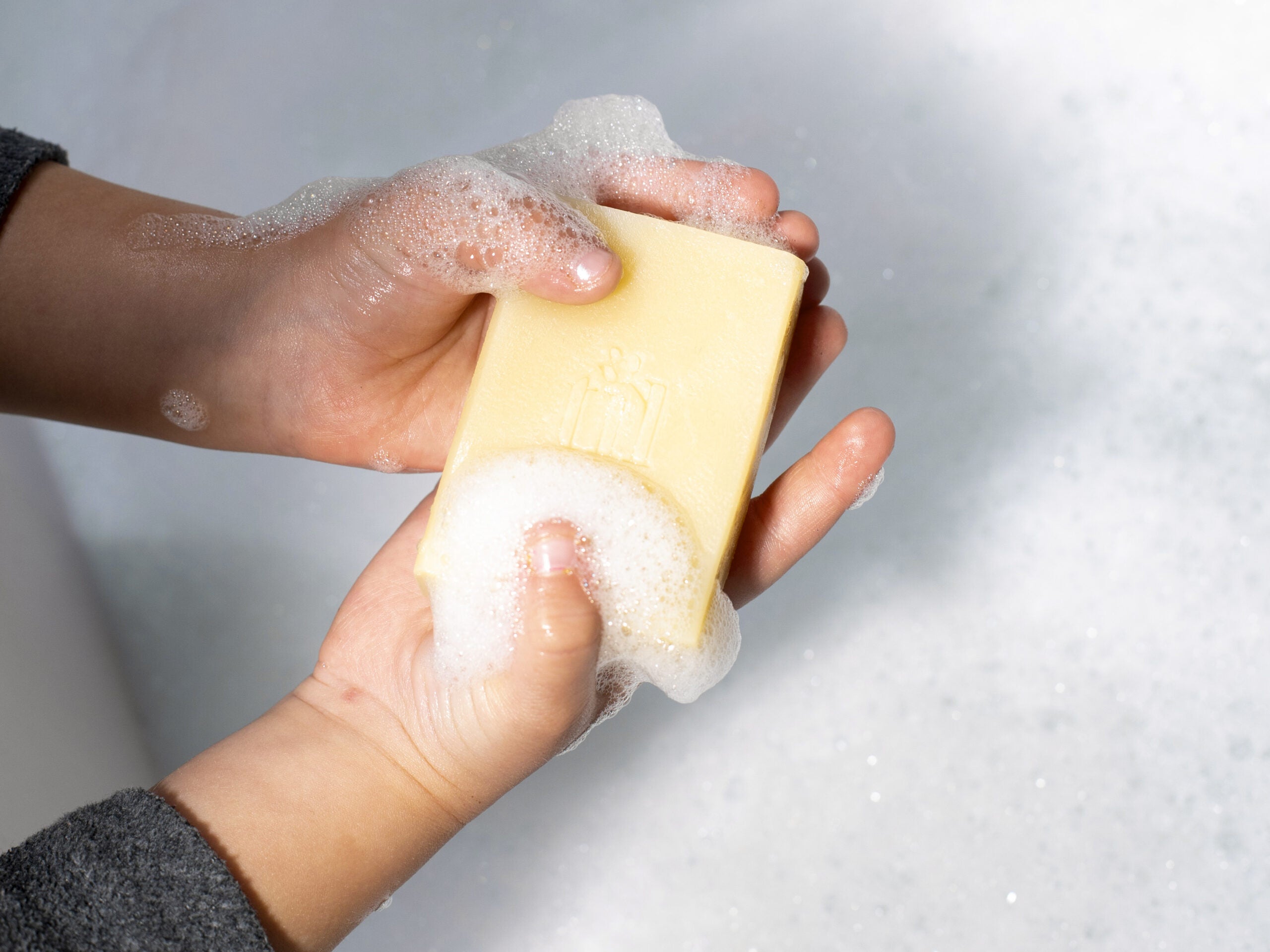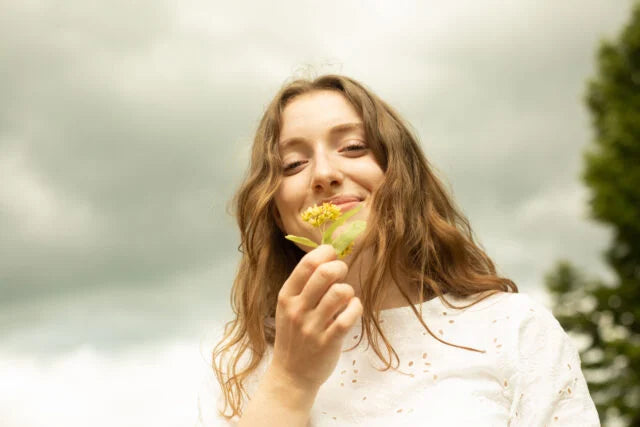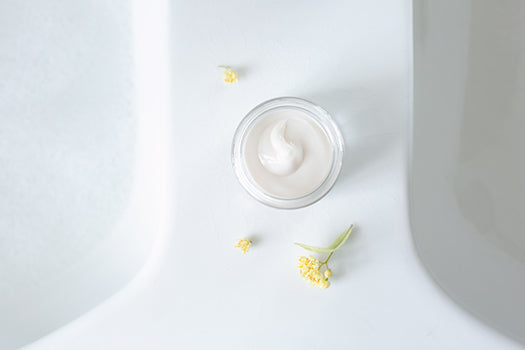
Cold saponification, the haute couture of soap making
If there is a product that goes back millennia , for daily use and capable of offering the best and the worst , it is soap ! A banal gesture of basic hygiene , often stripping, or a real care product that is good for the skin and the environment , the choice is available. At TiL, we believe that soapmaking must remain this artisanal know-how , this ancestral art, which treated like haute couture, constitutes a perfect meeting between the skin, the body and the mind . And since soap is our everyday companion , and even several times a day, we think we are worth it ☺

Soap-making, a thousand-year-old history
The first traces soap dates back to 2800 BC, on the tablets of the Sumerians of Babylon. It was then a mixture of oil, clay and ashes , used to wash wool. The Egyptians , among whom hygiene was essential, evoke soap recipes on their papyri. The Romans used it to lighten their hair and the Gauls did their laundry with a mixture of animal fat (goat tallow) and wood ash potash.
Certain soaps have become legendary throughout history: black soap, Aleppo, Castile or Marseille soap (made hot and with excess soda, etc.).
The Middle Ages is the time of public baths and steam baths , where soap is then used; but at the end of this period, water was considered to carry miasmas , and during the Renaissance , dirt was erected as a natural protective barrier , until the 18th century.

In 1786, in Marseille alone, 49 soap factories and their 600 workers produced 76,000 tons of soap ! (Alessandro Giraudo, New Extraordinary Stories of Raw Materials ). END 18th century , wood ash gave way to caustic soda , from salt, and animal fats disappeared in favor of vegetable fats .
Soap then experienced a strong expansion , stopped by the First World War , where raw materials were in short supply. Then, synthetic materials were developed, which were inexpensive and easy to mass produce . Maximum industrialization , poor quality oils, withdrawal of glycerin to resell it to other industries... soap is no longer a noble product at all and dries out the skin.
What exactly is soap?
A chemical reaction between a fatty substance (oil, butter) and soda (sodium hydroxide): composed essentially of triglycerides of fatty acids, the oil or butter transforms into soap when soda is added. Water triggers this reaction , which naturally produces glycerin, which is very hydrating. In addition, oil or butter contains unsaponifiable elements . Kesaco? This means that they do not disappear during saponification, because they do not react with lye, and they are super beneficial for the skin . Examples: vitamins A and E, phytosterols, squalene... with antioxidant, nutritional, protective, softening effects.
Industrial soap, harmful to the skin and the environment
Industrial soaps essentially use palm oil as a fatty substance and heat the soda, fat and water mixture to 120 degrees for several hours to accelerate the chemical saponification process as much as possible. Then the glycerin is extracted, removed and resold to be incorporated into other products. In industrial mode, we use a surplus of soda, then removed with salt water, which removes the natural glycerin and dries out the skin...
Results ? All the benefits for the skin of oils or butters are destroyed by heat , there is no longer any unsaponifiable fraction.

Cold saponification, an ancestral know-how
This ancestral know-how almost disappeared , and the artisan soap makers with it, with the arrival of industrialization, because it was too limited in production .
Cold saponification allows time ... as we like at TiL: we allow the time it takes for the chemical reaction to take place on its own, naturally . Without hurrying . This lasts the necessary time until the soda is exhausted ; we say that it is a total reaction. At the end, all that's left is soap and glycerin .
The reaction is slow at room temperature , 24 to 48 hours, and the soap should cure for at least a month.
The oils are not heated , the butters are only melted at a very low temperature to liquefy them, which preserves all their virtues .
Cold saponification uses, not an excess of soda, but conversely an excess of fatty substances (either because we used less soda, or because we added more oil or butter) : the soap is called “surgras ” (unsaponified percentage remaining in the soap, from 5 to 8%).
Not only does it clean the skin, but it hydrates it, nourishes it, softens it thanks to the naturally produced glycerin and the unsaponifiable compounds which make it super-fatty. And there, obviously, the quality of the oils and butters determines the quality of the soap !
"Le Joyeux Savon", our cold-saponified soap is a work of goldsmith !
A perfect encounter between the skin, the body and the mind , "Le Joyeux Savon" is the story of a little nomadic companion , who makes you experience sweet and fragrant moments , washing you joyfully while sublimating your skin. A blend of noble materials, silky foam, divine smell, "Le Joyeux Savon" is also ultra-ecological.

Exceptional moisturizing, nourishing, soothing and certified organic materials :
1. Natural Oils
· fair for life coconut oil , from fair trade . Of 100% natural origin , it has a very high level of lauric acid and therefore very good nourishing properties. It offers a high quality foaming and cleansing effect.
· olive oil , produced in Occitanie using cold mechanical extraction , allowing all the vitamins (A&E) of the olive to be preserved. It provides deep hydration to the skin and is suitable for all skin types, thanks to its very softness.
· oleic sunflower oil . Its fatty acid composition is around 80% (15 to 25% for classic sunflower), which gives more comfort and creaminess. Very rich in vitamin E, a natural anti-oxidant , it reinforces the feeling of softness.
2. Organic shea butter :
A high level of unsaponifiable elements, which provides infinite softness . 100% natural, unbleached, undeodorized and unrefined , it comes from a manual and reasoned collection linked to the cycle of nature. The producer's shea trees are planted at altitude, which provides a better level of fat in the product, and therefore a soap that is more pleasant to the touch and better protection of the skin's protective hydro-lipid film .
Very softening virtues :
Cold saponification provides a high degree of softness, thanks to the glycerin (8%) naturally produced during saponification. This makes it a treatment for all skin types , ideal for all those which react by pulling or itching after washing.

A light and creamy mousse with the sublime scent of linden blossom:
A little wonder of delicacy created by the talented perfumer Francis Kurkdjian . It gently caresses the skin, leaving it feeling like satin. What remains, like a little madeleine, is a lightly scented imprint, with an exquisite feeling of relaxation and comfort.

An eco-responsible product
Our soap, "Le Joyeux Savon", is cold saponified , which means that, like our linden trees , it takes its time , because it needs 6 weeks to mature .
This artisanal process keeps fatty acids, precious vitamins and anti-oxidants intact , like a real care product, which is good for the skin and the environment .
It lasts two to three times longer than liquid soap (a 100 g bar is equivalent to 30 to 40 showers), takes up little space, is biodegradable , and requires very little energy since it is not heated. Its ecological impact is thus limited as much as possible : little energy to manufacture, little water , and it does not release any pollutants into the rinsing water, unlike industrial products.
100% Made in France , It is entirely handcrafted in the "La Petite Madeleine" workshop in Troyes .
With its exceptional raw materials , and its delicious smell , combined with the know-how of cold saponification , "Le Joyeux Savon" is a marvel of softness and fullness .
A moment of the day that enhances the skin and celebrates the heart , everything TiL was created for ...



